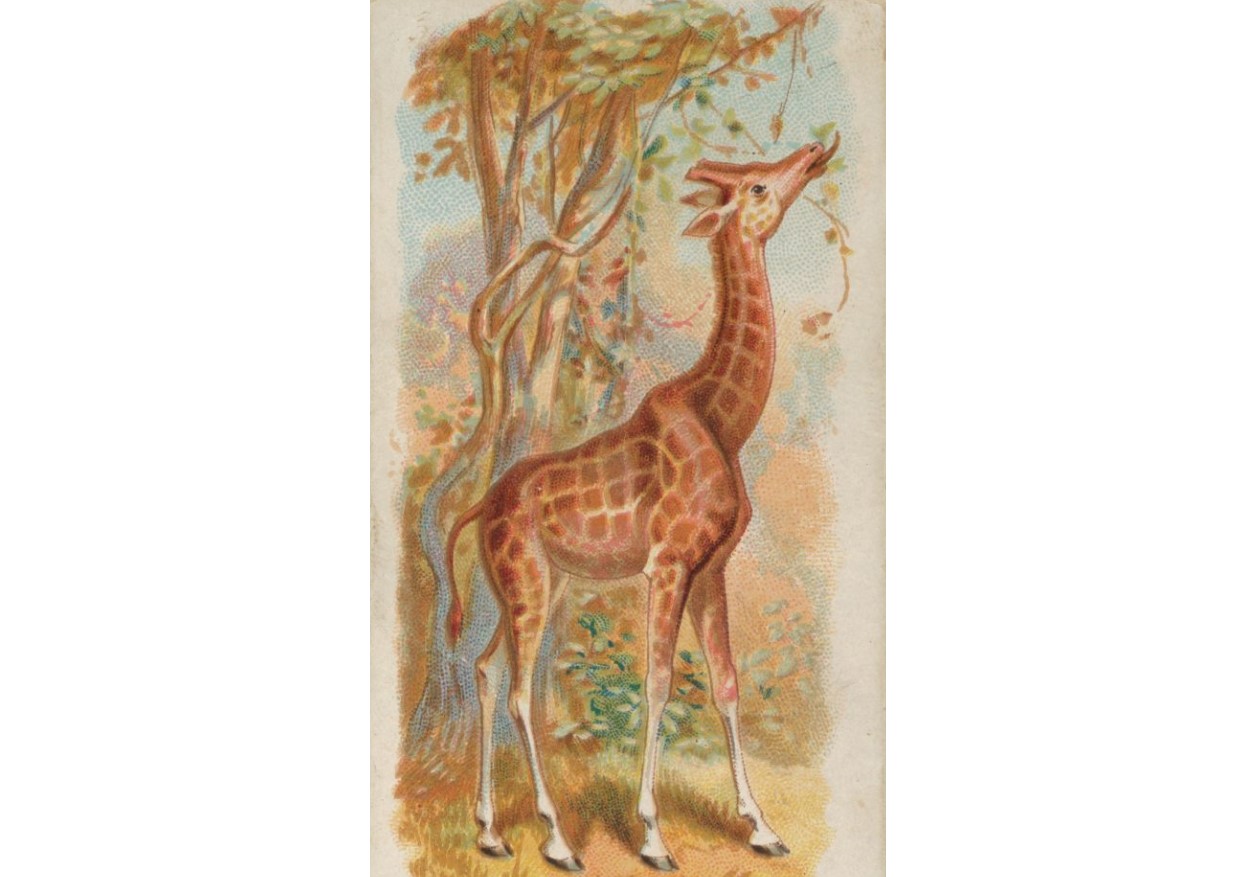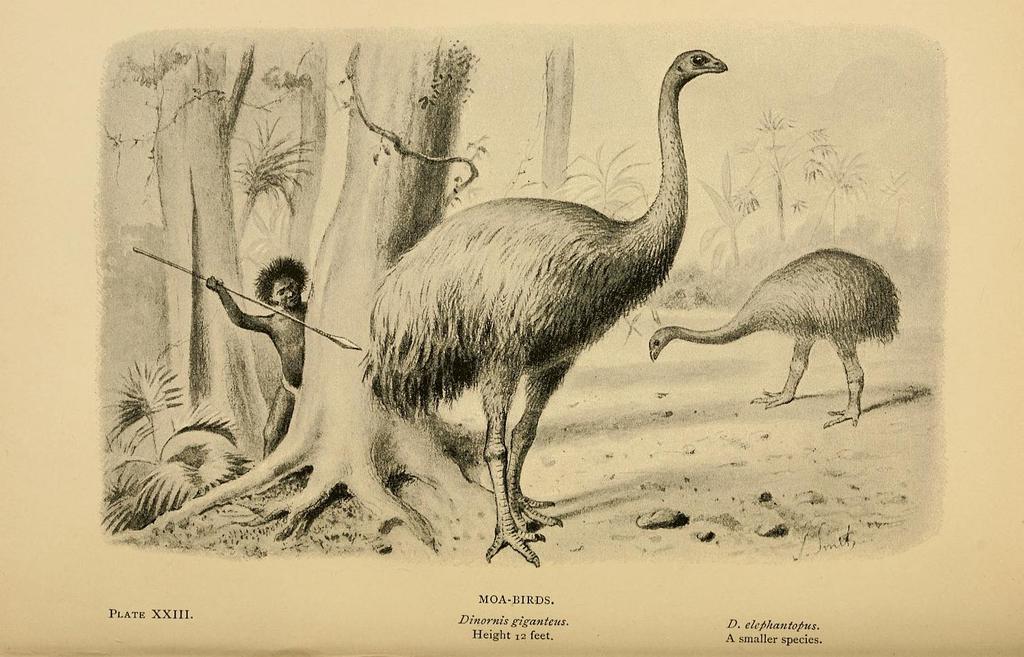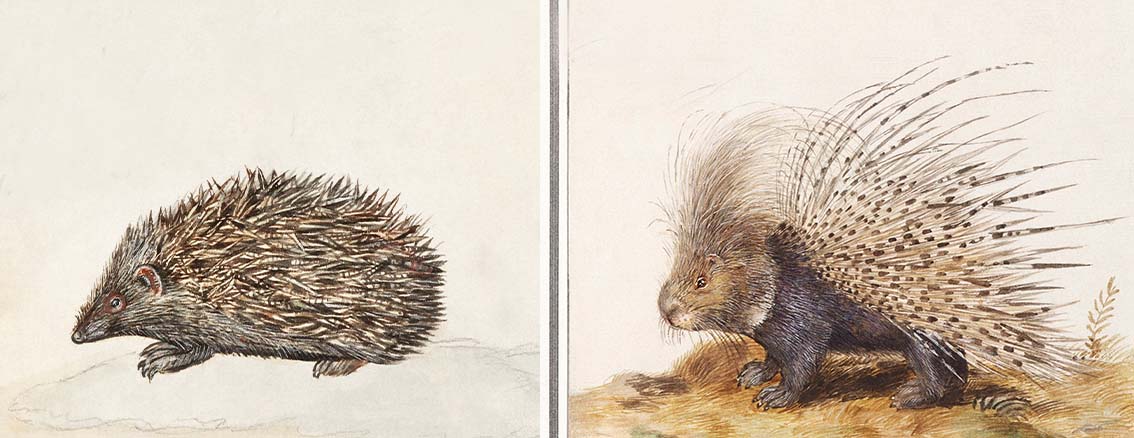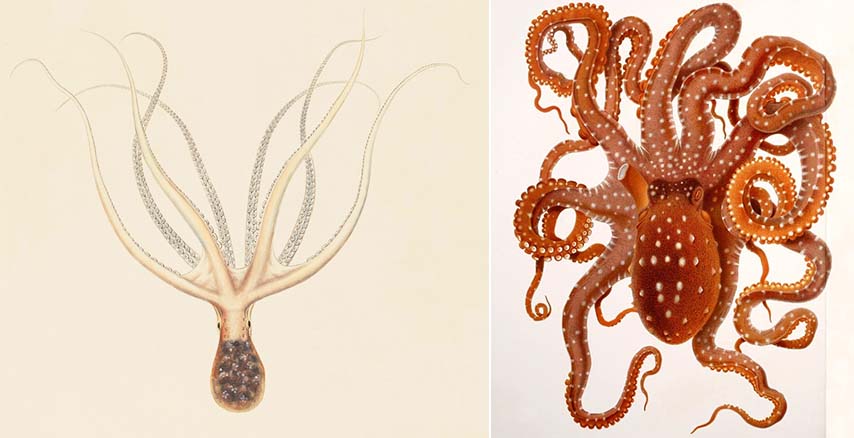The Sanctuary Papers: August 2021
First published in Sanctuary Asia,
Vol. 41
No. 8,
August 2021
By Abinaya Kalyanasundaram
Matters of the Heart

Illustration: Public Domain.
Giraffes are known to have the longest neck proportions in the animal kingdom today. As effective as it is to reach the top leaves of their favourite acacia trees, there are some disadvantages to this length. Adult giraffes can grow up to six metres tall, and so their hearts need to work really hard to pump blood to the head. So much so that to achieve the optimum blood pressure of 110/70 (for mammals) at the head, the blood pressure at the heart is a whopping 220-280/180! Such high pressure would, in humans, thicken the heart muscles and cause fibrosis in the left ventricle (which is the side that pumps blood to the head), and over time lead to heart failure. But giraffes, scientists noticed, have evolved innovative damage control mechanisms. While they do exhibit thickening of muscles, they do not develop fibrosis, thanks to the gift of mutations in five genes related to fibrosis. To avoid heart failure, they also have a larger ventricle and an extended ventricular-filling phase, which allows more blood to be pumped per stroke. And that’s not all! To avoid knee swelling, a common side effect of hypertension, they possess a tight wrapping of dense connective tissue in the region, which act like support stockings that BP patients use. Evolution truly is amazing!
Giraffes are known to have the longest neck proportions in the animal kingdom today. Adult giraffes can grow up to six metres tall, and so their hearts need to work really hard to pump blood to the head.
The Human Syndrome

Illustration: Public Domain.
For millions of years, New Zealand’s forest, shrubland, and subalpine ecosystems were home to large flightless birds called moas. Endemic to the island, nine moa species thrived, the largest Dinornis robustus and Dinornis novaezelandiae reaching about 3.6 m. (as tall as a bus!). They grazed on vegetation and laid eggs. Their only natural predators were the massive Haast’s Eagle, the largest eagle believed to have existed. However, the moas began to decline once humans arrived on the island, as New Zealand’s 80 million-year isolation meant its ecosystems were quite vulnerable to new species. In the 13th century, the first Mori (indigenous Polynesians) arrived and found the hapless flightless moas easy food. In addition to grabbing moa eggs, they also cleared vegetation, impacting the herbivorous birds. Moas went extinct, in less than a hundred years, according to recent carbon dating evidence. The Haast’s Eagle too vanished soon after, its main prey species gone.
Of Spines and Quills

Illustration: Anselmus Boëtius de Boodt/ Public Domain.
Defense mechanisms are vital for survival in the wild, and all creatures have evolved their own unique traits. Some use poison, some camouflage, while some like the hedgehog and porcupine have turned hair into weapons. While hedgehogs have short spines on their back, porcupines have longer quills that they use to defend themselves from predators. A study into the morphology and mechanics of a hedgehog spine and porcupine quill revealed some interesting differences. It appeared that the former’s spines, which are hollow hair made of keratin, are as short as possible and can bear loads because of internal stringers and septums, which prevent buckling. The porcupine’s quill on the other hand is proportioned to be as long as can be and bend easily if loaded. This led them to conclude that the porcupine prefers to use its quills to keep predators as far away as possible, while hedgehog’s spines’ main function is to absorb shock if it falls, which scientists say is quite common as they are quite clumsy and climb trees in search of insects.
Lost and Found in the Mediterranean

Callistoctopus furvus (left) and Callistoctopus macropus (right). Illustration: Public Domain.
About 170 years ago, researchers on the United States South Seas Exploring Expedition that roamed the Pacific Ocean collected, among others, specimens of strange octopuses from a seafood market in Rio de Janeiro. Red with white spots and a small head, the species was declared new to science by American naturalist Augustus Addison Gould. It was named Callistoctopus furvus in 1852. However, no specimens of this cephalopod were subsequently recorded and some scientists were convinced that it had most probably been that of C. macropus, a similar species found in the Mediterranean. That is until about 2013, when local Brazilian fishermen informed a graduate student researching octopus species in Brazil, Manuella Dultra, about ‘a strange octopus that only appeared in shallow waters when the wind changed and blew from the east’ and would ‘bury itself in sand when approached’. After years of study and working with local farmers, the species was found to be the C. furvus Gould described all those years ago!
The octopus Callistoctopus furvus was first described in 1852 but was forgotten to science until 2018, when local Brazilian fishermen alerted scientists to their existence.
Squeak of “Death”

Illustration: Public Domain.
The death’s head hawk moth Acherontia atropos has a sinister reputation. Perhaps it’s the skull-and-crossbones pattern on its head. Known to be a death omen in many cultures, this reputation was further sealed when it was featured in the classic horror ‘The Silence of the Lambs’, where it was stuffed down victims’ throats by the film’s murderous villain. In real life, though, this large moth species (80 to 120 mm.) is just an everyday moth found throughout Africa and southern Europe. It is gorgeous with dark upper wings, that are a stark contrast with the bright yellow of its lower wings. It has one more unusual trait – a sharp funny squeak. Turns out, the species has a twopart, accordion-like system and its rapid movement produces sound. First, it sucks in air, causing the epipharynx, a flap between the mouth and throat, to rapidly vibrate. The air is then expelled with the flap open, creating a second sound. This happens at a fifth of a second! The moth’s behaviour of feeding on honey would have allowed it to develop strong muscle movements and the epipharynx, which make the sound production possible. The death’s head hawk moth squeaks to deter predators such as birds and bats.
Venus Fly Trap

Illustration: Public Domain/Alice Lounsberry
Described by Charles Darwin as “one of the most wonderful [plants] in the world”, the venus flytrap Dionaea muscipula is a fascinating marvel. Growing in the subtropical wetlands of North and South Carolina, USA, it is one of the smartest carnivorous plants out there. The small plant has a rosette of seven or eight leaves, each of which are armed with a ‘trap’ hinged at the midrib. The two lobes of the trap secrete nectar to attract insects, and hang open like a clam. When an unsuspecting insect bumps into the lobes’ inner sensory hairs, electric signals spread across the leaf and it clamps shut! But it’s not that simple. See, it could have been a stray raindrop or wind that triggered the sensory hair. So how does the plant know it’s an actual prey? It calculates time… only if the hairs are triggered twice or thrice in a 30 second period, they clamp shut!
Scientists at the National Institute of Basic Biology in Okazaki, Japan, found that changes in calcium concentrations inside leaf cells helped the plant keep time. They genetically modified Venus flytraps to emit green fluorescence when calcium ions were present. When sensory hairs were stimulated, they observed a green glow indicating increasing calcium ion concentrations. The glow gradually dropped until a second stimuli raised the concentration again. When a certain threshold was reached, within 30 seconds, the trap clamped shut.
Venus flytraps shut their clamps in about 1/10th of a second once they detect stimuli, but the digestion process for an average insect takes up to 10 days

.png)





